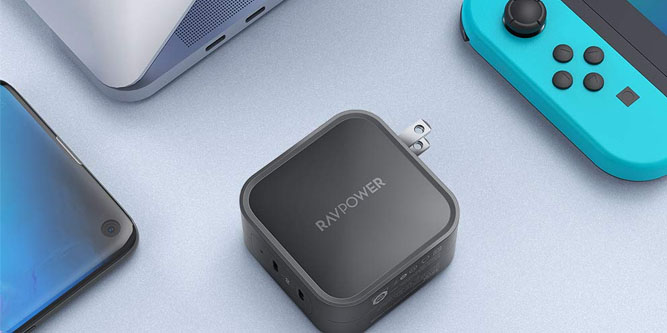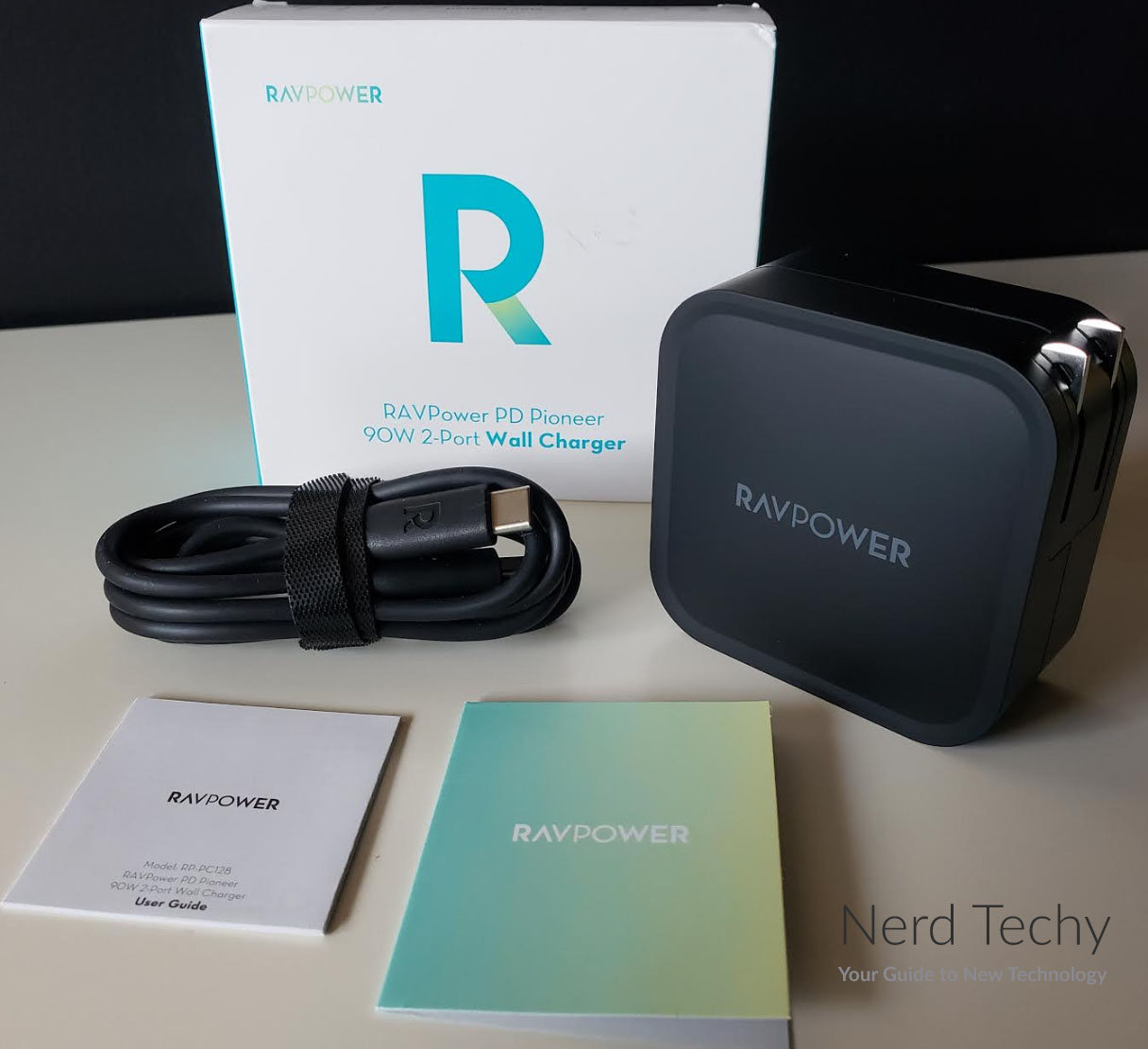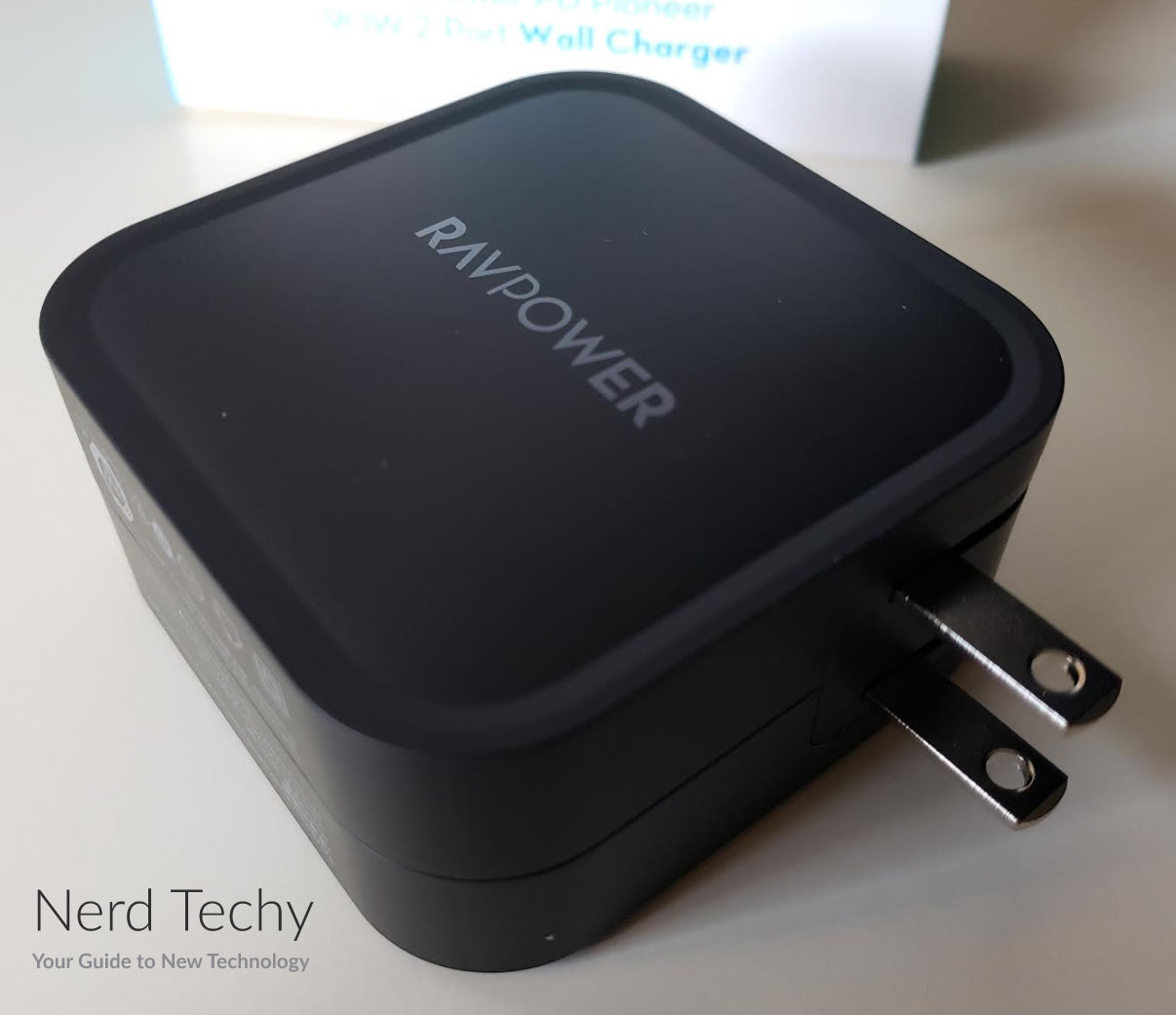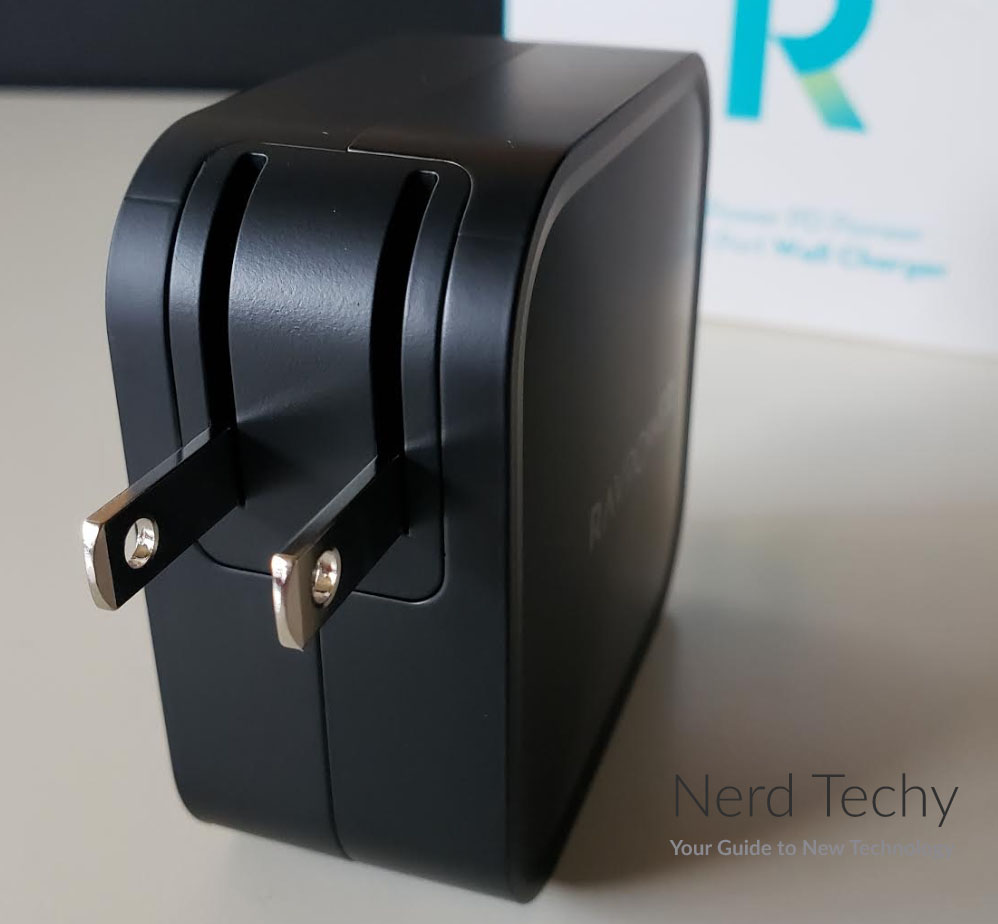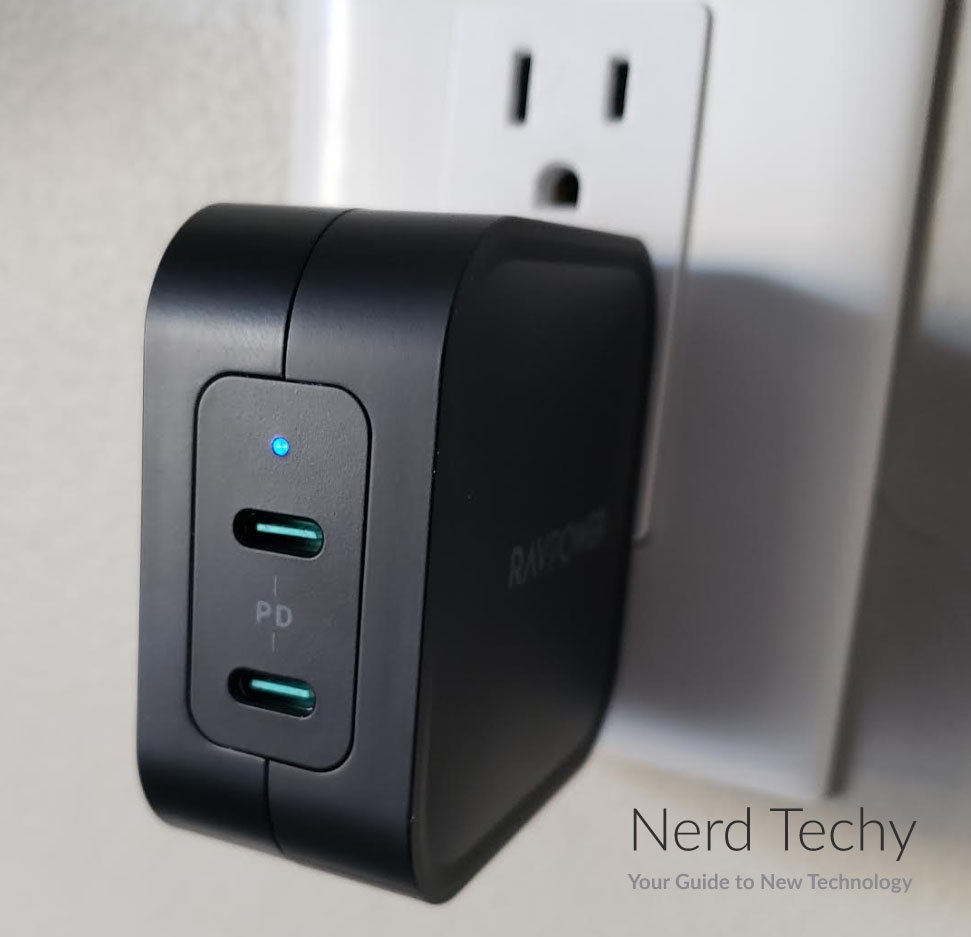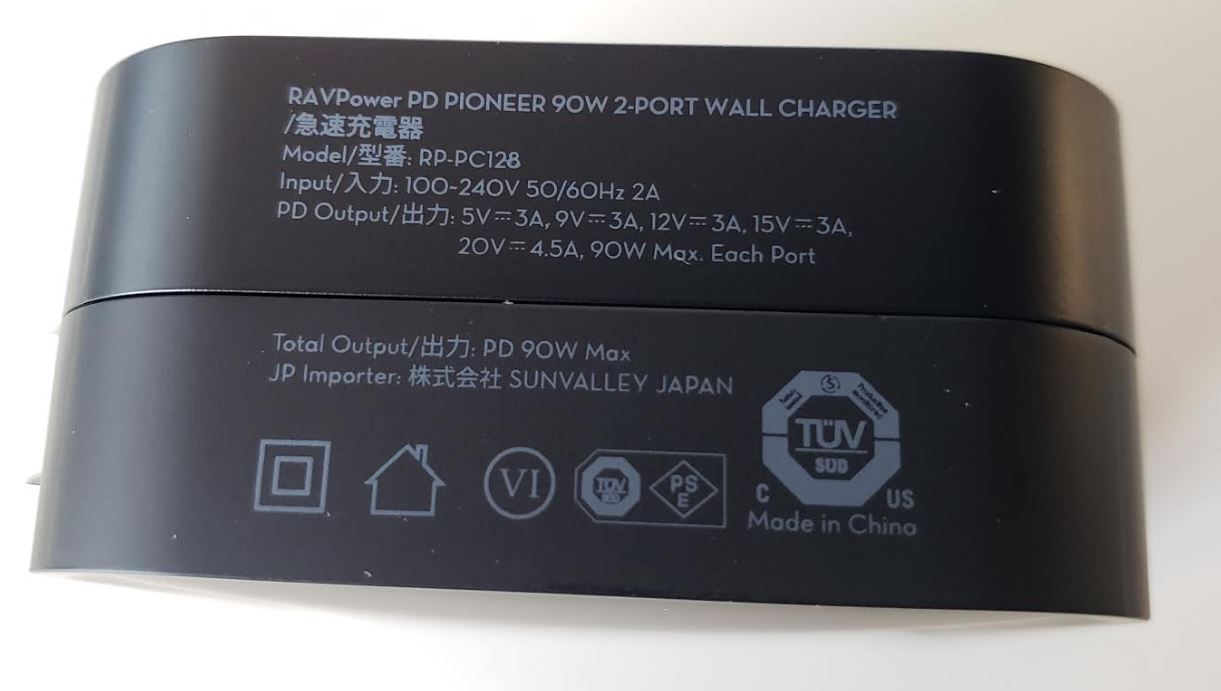A few years back, every one of your devices used a different charging technology. It seemed like everything came with a DC charging block and a unique adapter. This could lead to a variety of problems. For example, if you had an older device, the charger might not even be available. Then came the glorious days of USB charging. Now, all your devices can charge from a simple USB port. And since there are only a few types of cords, losing or tearing a USB cable isn’t the end of the world. For just a few bucks, you can replace it, even if the device itself is no longer in production.
That said, you need somewhere to plug your devices in to begin with. If you’re working on a desktop computer, you can typically just plug into your PC. But if you’re working on a laptop or going on the road, you need a USB wall charger. Today, we’ll be looking at the RAVPower 90W 2-Port (Model RP-PC128) USB-C Wall Charger. This is a USB Type-C charging block that plugs into your wall socket. It has a pair of USB Type-C ports, and is capable of charging two devices simultaneously. And both of these ports support PD charging, which is a great additional value. Let’s dig into the features, and see what it has to offer!
What is PD, Anyway?
Before we go any further, we need to explain what PD technology is, and how it’s changing the electronic world. The need for PD stems from the limitations of earlier USB technology. First released in 1996, USB stands for “universal serial bus”. It was meant to overcome the limitations of earlier cord technology, which came in a variety of formats. The idea was to create a single, universal standard for data transfer from one device to another. The technology quickly took off, and was ubiquitous by the year 2000.
Because of the popularity of USB, manufacturers started using it to supply power as well as data. However, the original USB standard supplied only a very small current. Manufacturers responded by creating USB 2.0 and 3.0. USB 3.0 can provide a current of up to 5V/2.4a (18 watts), enough to charge a phone while using it. However, larger devices were still left out in the cold. For example, it can take 12 hours to clean a laptop or large power bank via USB 3.0. Since nobody wants to wait 12 hours for their laptop to charge, there was still a need for dedicated chargers.
In 2012, the USB Promoters Group announced the development of PD technology. PD is short for “power delivery”, and is made to improve the wattage of USB power delivery. Earlier protocols were only a slight improvement over USB 3.0. In 2018, all of that changed. The latest USB PD technology can provide up to 100 watts of current, powering even high-demand devices. This new technology is sometimes called “quick charge”, because it allows you to quickly charge powerful devices. For example, you can charge a laptop, or charge a smartphone in under an hour. You can even charge a Nintendo Switch while you’re playing a game.
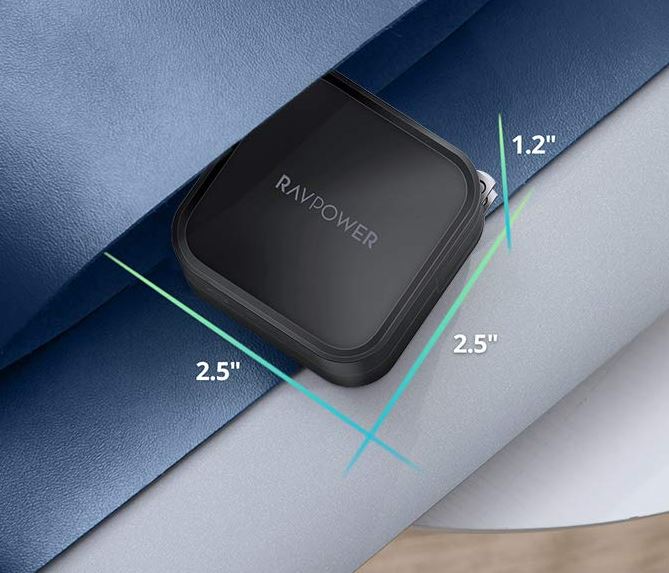
Another attractive feature of PD technology is that it doesn’t supply power in a fixed direction. With older USB technology, a port was either used for output or input. A PD port, however, can be used in either direction. For example, some newer smartphones can be used as a power bank. Charge your phone from your laptop, or charge your laptop from your phone. That’s quite a significant advantage!
In addition, PD ports are based on USB Type-C technology. This means that they’re reversible. This might sound like a silly advantage, but it’s really not. Have you ever been frustrated because you keep flipping your USB plug around and it won’t insert? USB Type-C avoids this issue. Simply grab the plug and plug it in without over-analyzing the situation.
Finally, PD technology is “smart”, and allows for dynamic power supply. This makes manufacturing cheaper and easier, since manufacturers no longer have to provide separate overcharge protection. You can charge any device, of any capacity, from the same port. The PD port will automatically provide the correct voltage and amperage.
One good example of this is the RAVPower 20000mAh Portable Charger. It’s a portable power bank with an impressive, 20000mAh capacity. And it has a PD port that can be used both for quick charging your devices and quick charging your power bank.
Overall Design
The RAVPower 90W 2-Port (Model RP-PC128) USB-C Wall Charger is a compact AC adapter that plugs into your wall outlet. It’s constructed from ABS plastic, with a ribbed design that’s easy on the eyes. On both sides, there’s a grey RAVPower logotype, but the rest of the matte finish is otherwise uninterrupted. On the back side, you’ll find a pair of PD power ports. The inner tabs are an attractive green color, which adds an eye-catching detail to an otherwise mundane device. Above the dual PD ports, you’ll see a small LED light. The light glows blue when the block is plugged into both a power socket and a device. This lets you know when your device is actually charging, so you’ll never get surprised by a failed connection.
The RAVPower is designed for easy transport, as well as for home use. The power socket pins are foldable, so they won’t get snagged or bent inside your luggage. They also won’t protrude and poke you while you’re wearing a backpack or carrying a laptop bag. The overall size is 1.2 inches in thickness and 2.5 inches square. At this size, you can even carry it in your pocket. It weighs 9.6 ounces, which is a bit hefty for such a small device. You can feel the quality of construction when you hold it in your hand.
Along with the device itself, you also get a USB Type-C to USB Type-C charging cable. It’s 4 ½ feet long, which is enough for charging under most circumstances. If you need to charge 2 devices or you need a longer cable, it’s easy to buy another one.
One thing you’ll notice is that the RAVPower charger is significantly more expensive than a typical USB charging block. This is because of the PD technology, which costs more to produce. If you’re only charging a smartphone, you might want to save money with a standard USB charger. We’ve reviewed some of the best USB wall chargers on the market, although they don’t support PD or quick charging. Alternatively, you could install a USB wall receptacle. It’s not portable, but it will always be there when you need it.
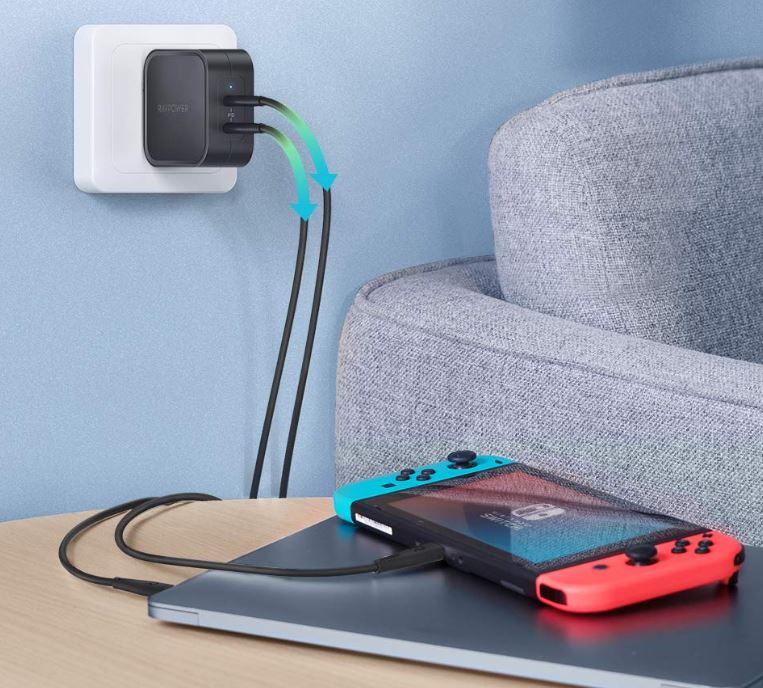
Compatibility and Performance
The RAVPower provides up to 90 watts of power supply from each port, which is an insanely high amount. You can charge an iPhone X or Samsung Galaxy S10 in less than an hour. But forget about smartphones; let’s think bigger. You can charge a MacBook Pro 15” in 2 hours. This means you can even use your MacBook while it’s charging, albeit it will take a bit longer to charge. In all, it’s compatible with any laptop that requires a 90-watt or lower power supply. This includes just about every USB charging laptop on the market.
The dual device charging is even more impressive. You can charge 2 laptops at a time at a full 90 watts. This is a major improvement over most USB chargers, which tend to drop the current with multiple devices connected. It also uses smart technology to determine the exact current required for each device. For example, suppose you connect a laptop to one port and a smartphone to the other. Each of your devices will get the correct amount of current. As a result, you can charge just about any device at just about any time.
The RAVPower charger also integrates GaN technology and a Pi chip. These technologies are designed to maximize charging efficiency. As a result, over 93 percent of the current is actually delivered to your device. When compared to the typical efficiency of 75 to 80 percent, this is exceptional. Over time, you’ll end up saving a significant amount of power. In addition, the RAVPower charger also takes advantage of all the safety features of PD technology. Your devices are protected from short circuits, overcurrent, and over-discharge. The power block also features high temperature protection, so it will shut off rather than burn out a device.
Technical Specifications
Before we wrap up, let’s take a quick look at the RAVPower’s technical specifications. One thing you’ll notice is that it supports 240-volt power, so it’s suitable for use anywhere in the world.
- Input power: 100-240V AC, 2.5A, 50/60Hz
- PD Port 1 Output: PD18W/30W/45W/60W/61W/87W/90W
- PD Port 1 Output: PD18W/30W/45W/60W/61W/87W/90W
Final Verdict
So, how does the RAVPower 90W 2-Port (Model RP-PC128) USB-C Wall Charger stack up? In our view, it’s one of the best on the market. To start with the obvious, the PD technology provides an incredible amount of value. There are several PD wall chargers on the market, and some of them are even dual-port. But few of them support quick charging 2 devices simultaneously. This is a fantastic value, and makes it well worth the investment. In addition, the system is very safe, with full protection to keep your devices from getting damaged. You can even charge on 240-volt power during your trip to Europe! No need to buy extra, special adapters that you’re only going to use once.
Meanwhile, the design is exceptional. It’s compact and easy to transport, with foldable power prongs, which makes it a great choice for travelers. The LED indicator is also a much-appreciated feature. It ensures that you won’t accidentally leave a cord only partially plugged in. The only downside is the price, which is a bit steep for a USB wall charger. But given all the features, it’s well worth the investment.
Meet Ry, “TechGuru,” a 36-year-old technology enthusiast with a deep passion for tech innovations. With extensive experience, he specializes in gaming hardware and software, and has expertise in gadgets, custom PCs, and audio.
Besides writing about tech and reviewing new products, he enjoys traveling, hiking, and photography. Committed to keeping up with the latest industry trends, he aims to guide readers in making informed tech decisions.

